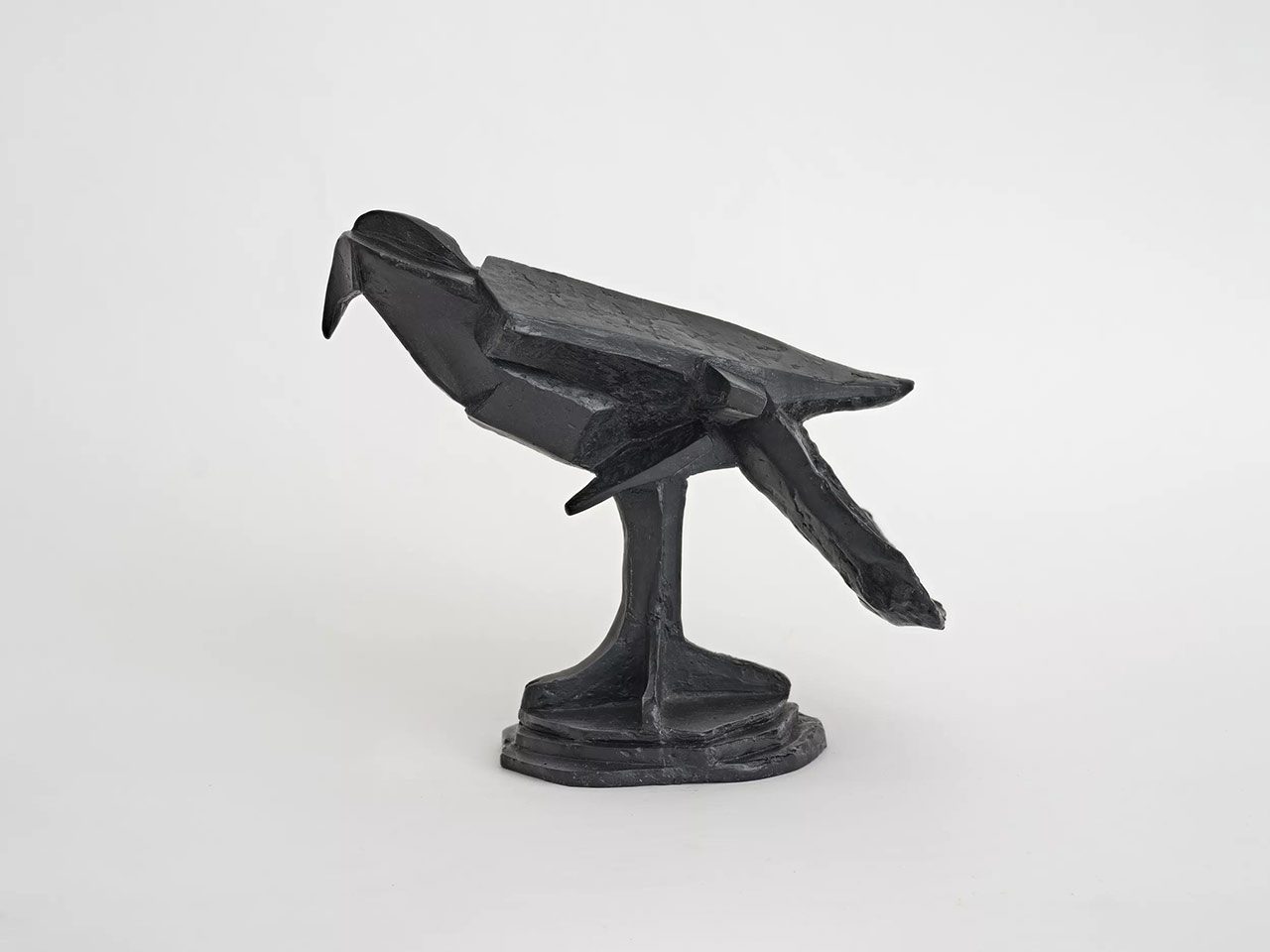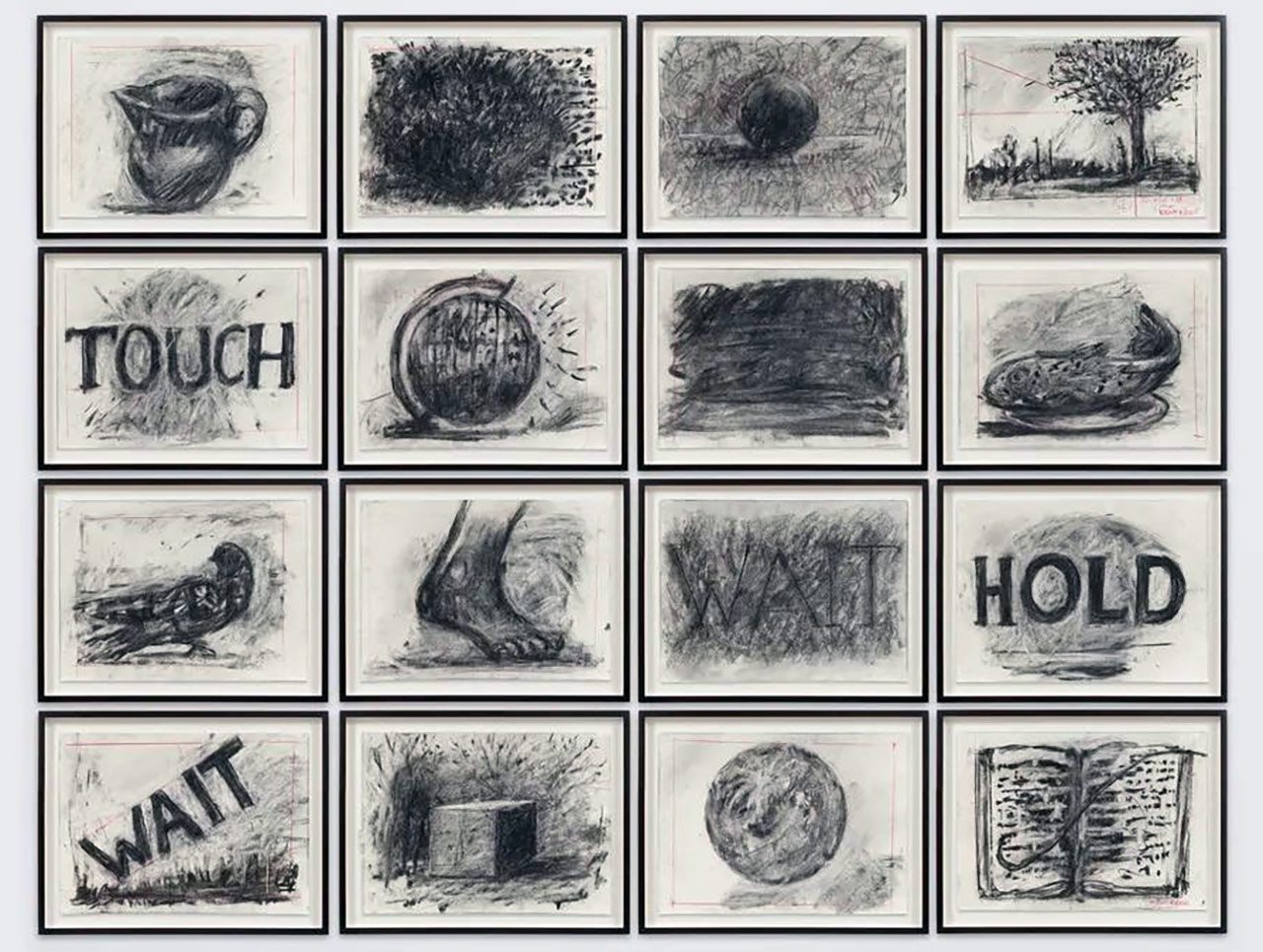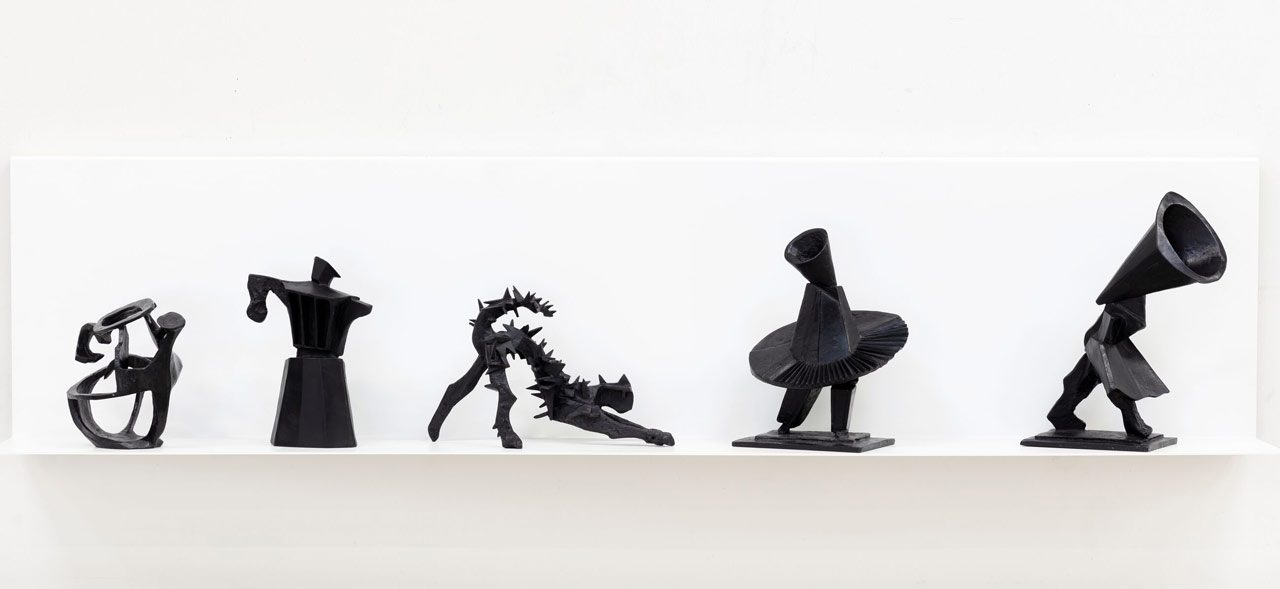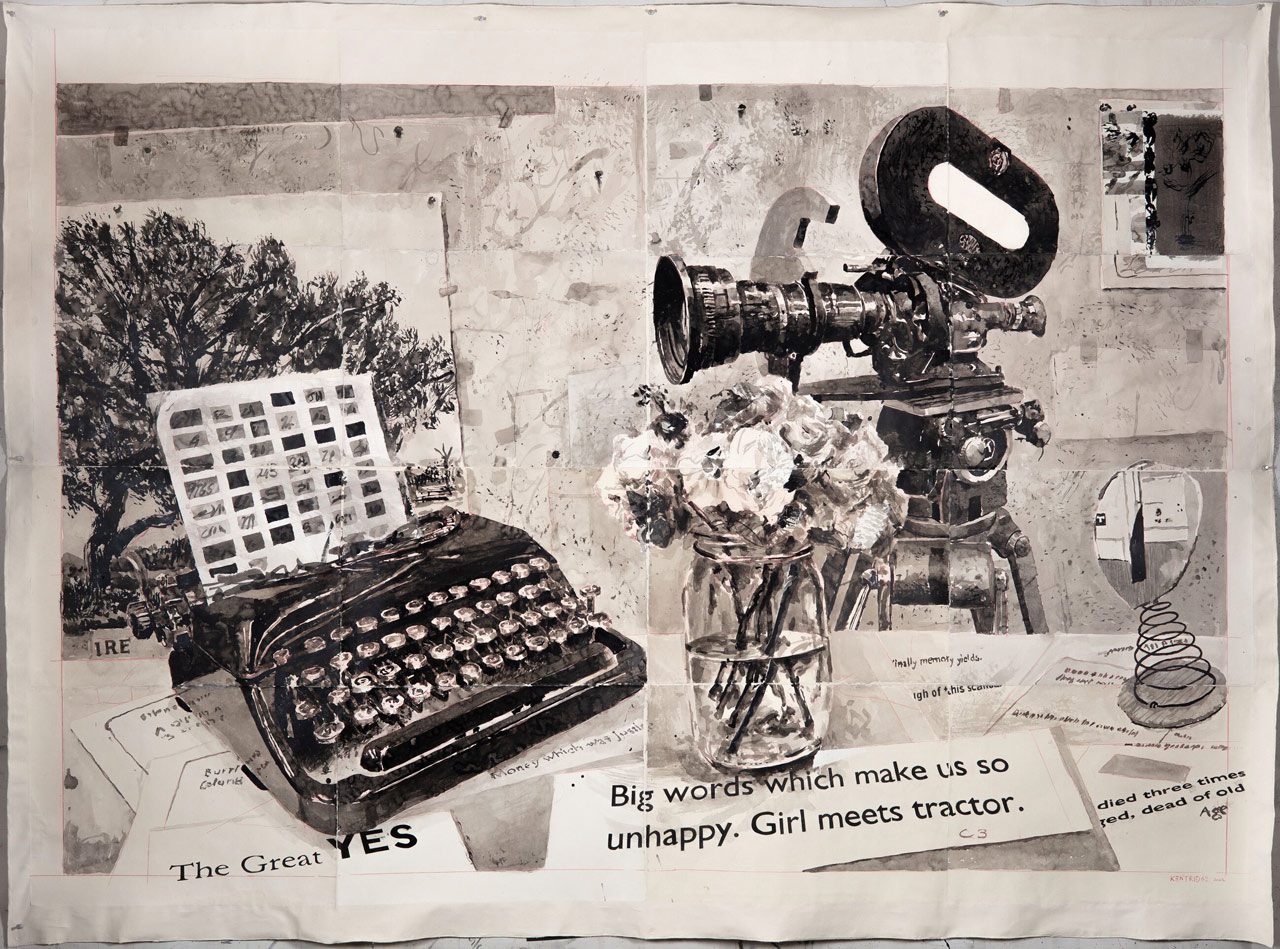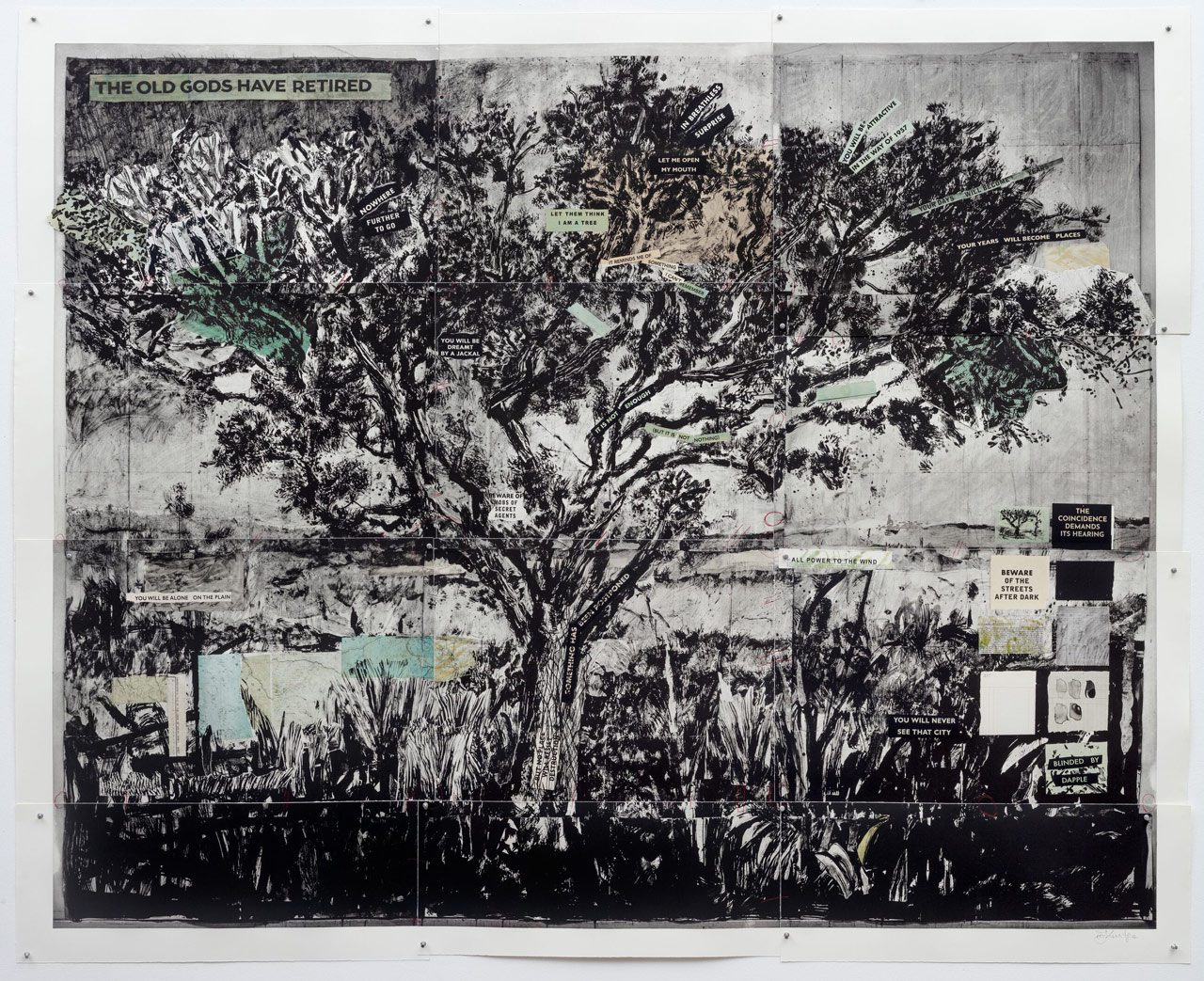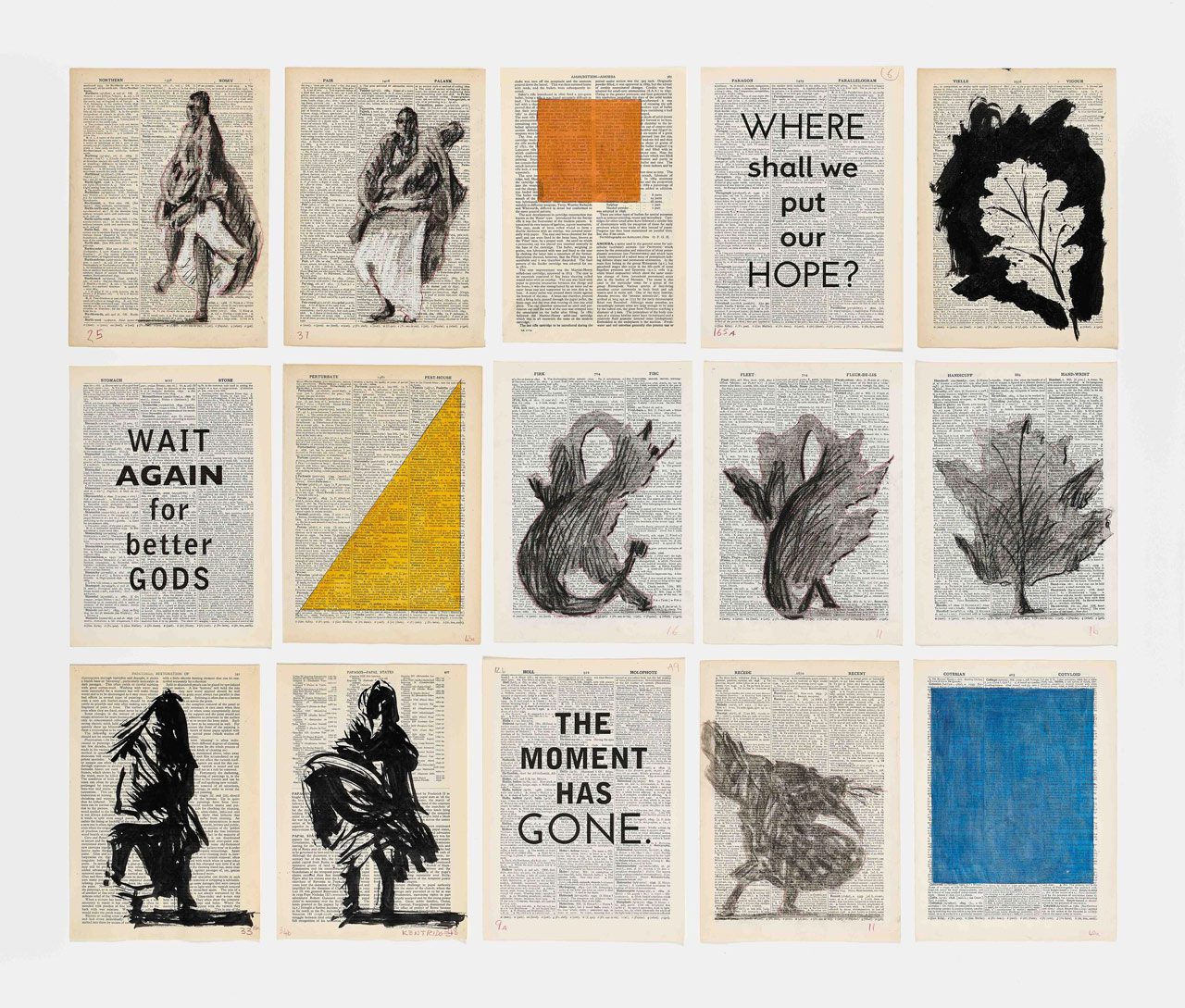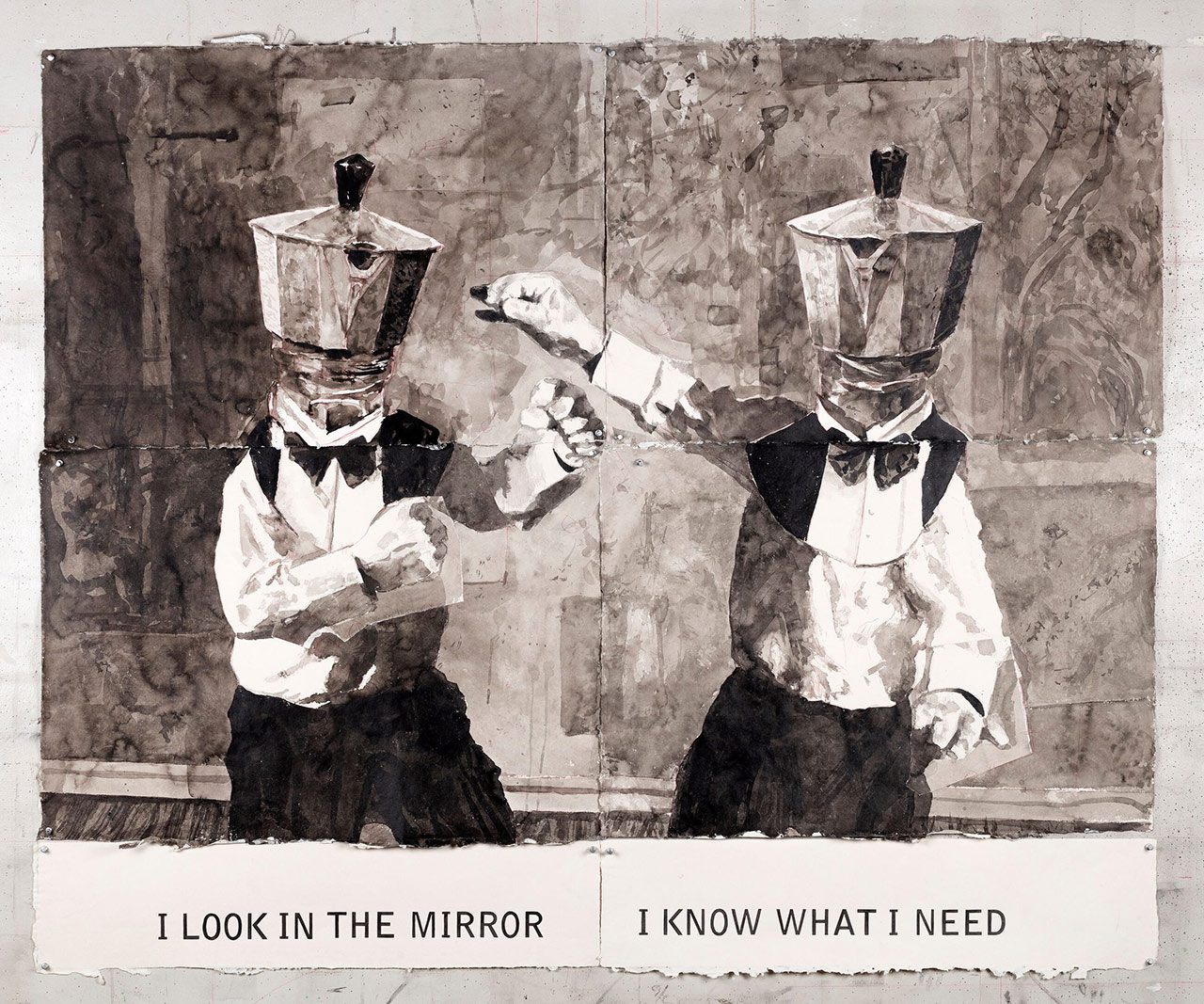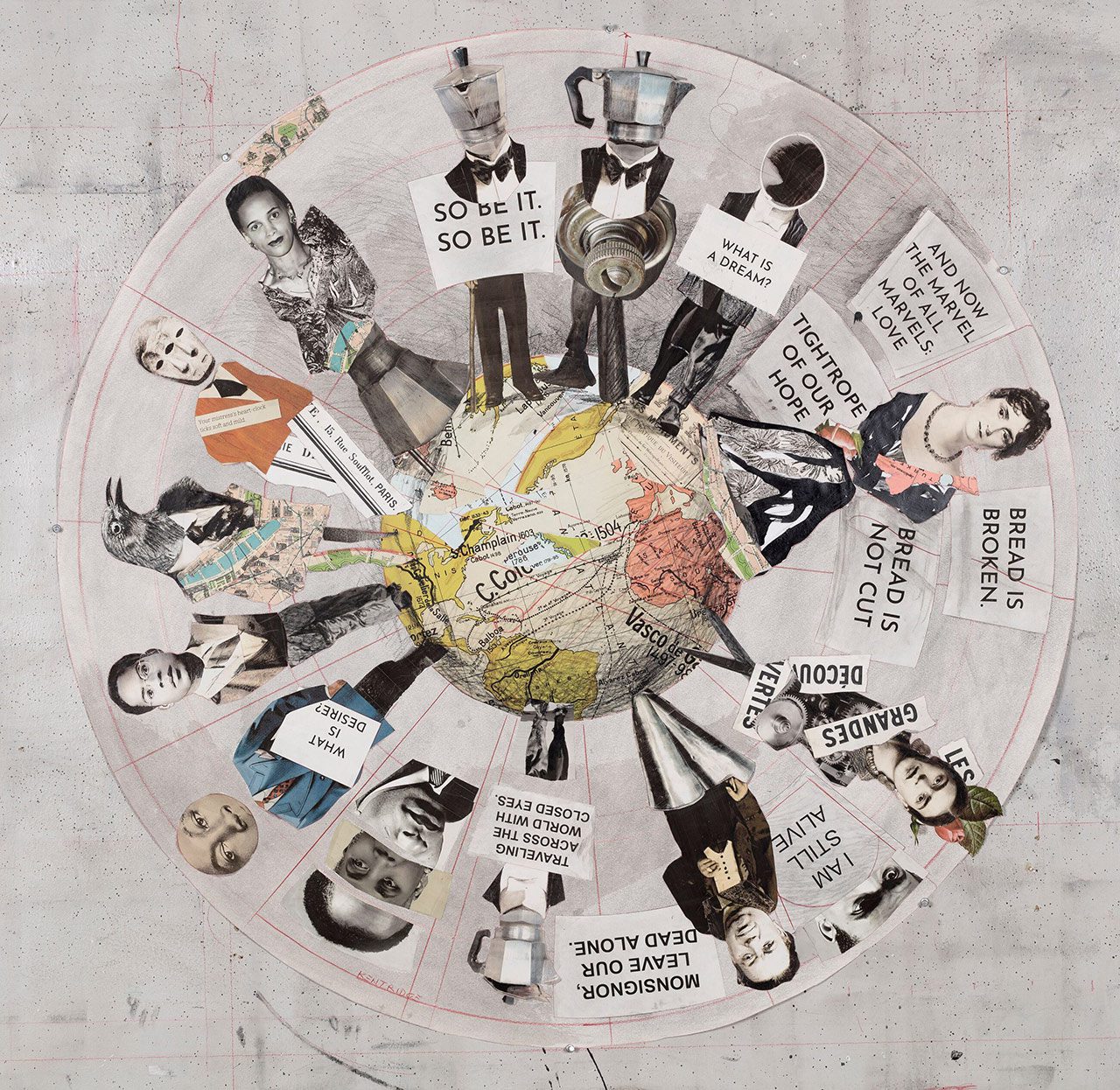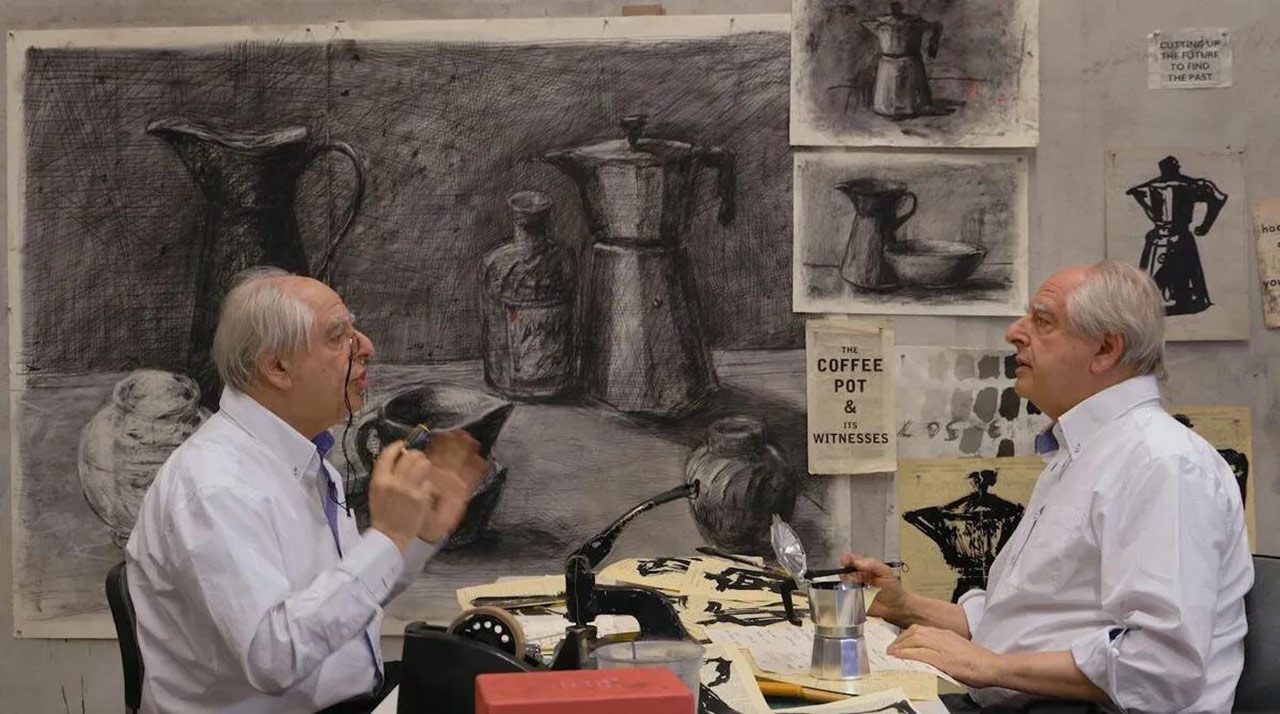TRIBUTE:William Kentridge-A Natural History of the Studio
William Kentridge is internationally acclaimed for his artworks, theater and opera productions. His method combines drawing and erasing, tearing, gestural painting, collage, weaving, casting, writing, film, performance, music, theater and collaborative practices to create works of art that are grounded in politics, science, literature and history, yet maintain a space for contradiction and uncertainty.
By Efi Michalarou
Photo: Hauser & Wirth Gallery Archive
In his solo exhibition “A Natural History of the Studio” at Hauser & Wirth Gallery in New York, William Kentridge presents his acclaimed episodic film series “Self-Portrait as a Coffee- Pot” with more than seventy works on paper integral to its creation and an array of sculptures. The is the first ever to present all the drawings from this filmic masterpiece, hailed by critics as a moving, witty and ultimately wondrous synthesis of the personal and the political, the individual and the universal. Conceived by the artist’s longtime collaborator Sabine Theunissen, the installation design for the first floor of “A Natural History of the Studio” at 22nd Street will include the charcoal drawings used in the animation of “Self- Portrait as a Coffee-Pot” and evoke the feeling of being in Kentridge’s working environment with him, a place where the walls hum with inspiration and every surface tells a story. Shot in his Johannesburg studio at the outset of the global COVID-19 pandemic and completed in 2024, the series includes nine thirty-minute episodes that bring viewers inside the artist’s mind. Through a blend of Kentridge’s signature stop-motion technique, live action performance and philosophical dialogue, “Self-Portrait as a Coffee-Pot” delves into subjects like Greek mythology, the history of mining in Johannesburg, colonialism in Africa and Soviet absurdities. And here, as in his wider body of work, the seemingly mundane and familiar household coffee pot becomes a stand-in for the artist, an avatar of the art-making process in which a steady flow of ideas is akin to the bubbling of coffee brewing. In several episodes of the series, Kentridge is joined by collaborators and assistants; in others he is seen debating and squabbling with a series of doppelgängers in a playful externalization of his internal creative struggles. The second floor of the exhibition explores the relationship between drawing and sculpture in Kentridge’s oeuvre. Among works on view here is a selection of “Paper Procession” sculptures. Made from aluminum panels fixed to a steel armature and hand-painted in vibrant oil paint, these works are based on a series of small-scale paper sculptures Kentridge made from pages of a 19th century accounting journal from the Chiesa di San Francesco Saverio in Palermo, Italy. The works feel like moving sketches—ephemeral yet powerful––and extend Kentridge’s exploration of history, memory and transformation using humble materials to challenge grand narratives. The presentation will also include Kentridge’s bronze ‘glyphs’ –– sculptures of both everyday and arcane objects, words and icons that function together as a sort of visual glossary that can be arranged and re-arranged to construct different sculptural ‘sentences.’ The glyphs began as ink drawings and paper cut-outs that subsequently were cast in bronze and finished with a pitch-black patina evoking the hue of both ink and shadows. These glyphs also make an appearance in the single channel animated video on view titled ‘Fugitive Words’ (2024). The film opens with an overhead view of Kentridge’s hands flipping through the pages of one his many notebooks––a vital part of his creative process and an extension of his studio––where sketches, scores, diagrams, lists and phrases appear. The scene quickly develops into a dreamlike, non-narrative journey through the artist’s mind, where fleeting words, shifting images and even his drawing tools come to life to create an evolving landscape of memory and transformation, all set to Beethoven’s ‘Archduke’ piano trio. The exhibition extends to Hauser & Wirth’s nearby 18th Street location with a selection of thirty prints made by Kentridge over the last two decades. The artist first began printmaking while a student at the University of the Witwatersrand in Johannesburg and the medium has been integral to his practice ever since. Kentridge has experimented with a broad range of techniques in this realm, from etching to lithography, aquatint, drypoint, photogravure and woodcut, observing that, “Printmaking…became a medium in which I could think, not merely a medium to make a picture… it has not been an adjunct to my other activities, but in many ways, it has been a central thread that has gone through the work I have done in the studio over the last 40 years”. Many of the works on view revisit familiar personal iconography or directly reference other milestone projects, including the films on view. The image of a typewriter, for example, dominates four print variations on view and is used as a metaphor for communication, historical record-keeping, and bureaucratic authority. Produced with master printmaker Mark Attwood in 2012 and given such titles as “The Full Stop Swallows the Sentence” and “Undo Unsay” these works on paper are directly connected to Kentridge’s film “The Refusal of Time” (2012), a thirty-minute meditation on time and space, the complex legacies of colonialism and industry, and the artist’s own intellectual life. A series of lithographs titled “Portraits for Shostakovich” (2022) was inspired by a 52-minute film made to accompany live performance of Dmitri Shostakovich’s Symphony No.10. Titled “Oh To Believe in Another World” (2022), that project also serves as the subject of episode 8 of “Self-Portrait of a Coffee-Pot”. These colorful prints feature fractured portraits of Soviet intellectuals, members of the cultural avant-garde like the playwright and poet Mayakovsky, and politicians such as Lenin, Trotsky and Stalin. The presentation at 18th Street also includes four self-portraits. Made in collaboration with Jillian Ross Print in 2023, these works employ photogravure, drypoint, and hand-painting techniques with collaged elements of photographs, drawings, and fragments of text – an approach that in its insistent layering evokes the construction of self and identity as a continual work in process, intertwined with and shaped by socio-political forces.
Photo: William Kentridge, Self-Portrait as a Coffee-Pot, Episode 1: A Natural History of the Studio (still), 2020 – 2024, HD Video, 24 min, © William Kentridge. All Rights Reserved, DACS 2024, Courtesy the artist, Goodman Gallery and Hauser & Wirth
Info: Hauser & Wirth Gallery, 542 West 22nd Street & 443 West 18th Street, NY, USA, Duration: 1/5-1/8/2025, Days & Hours: Tue-Sat 10:00-18:00, www.hauserwirth.com/
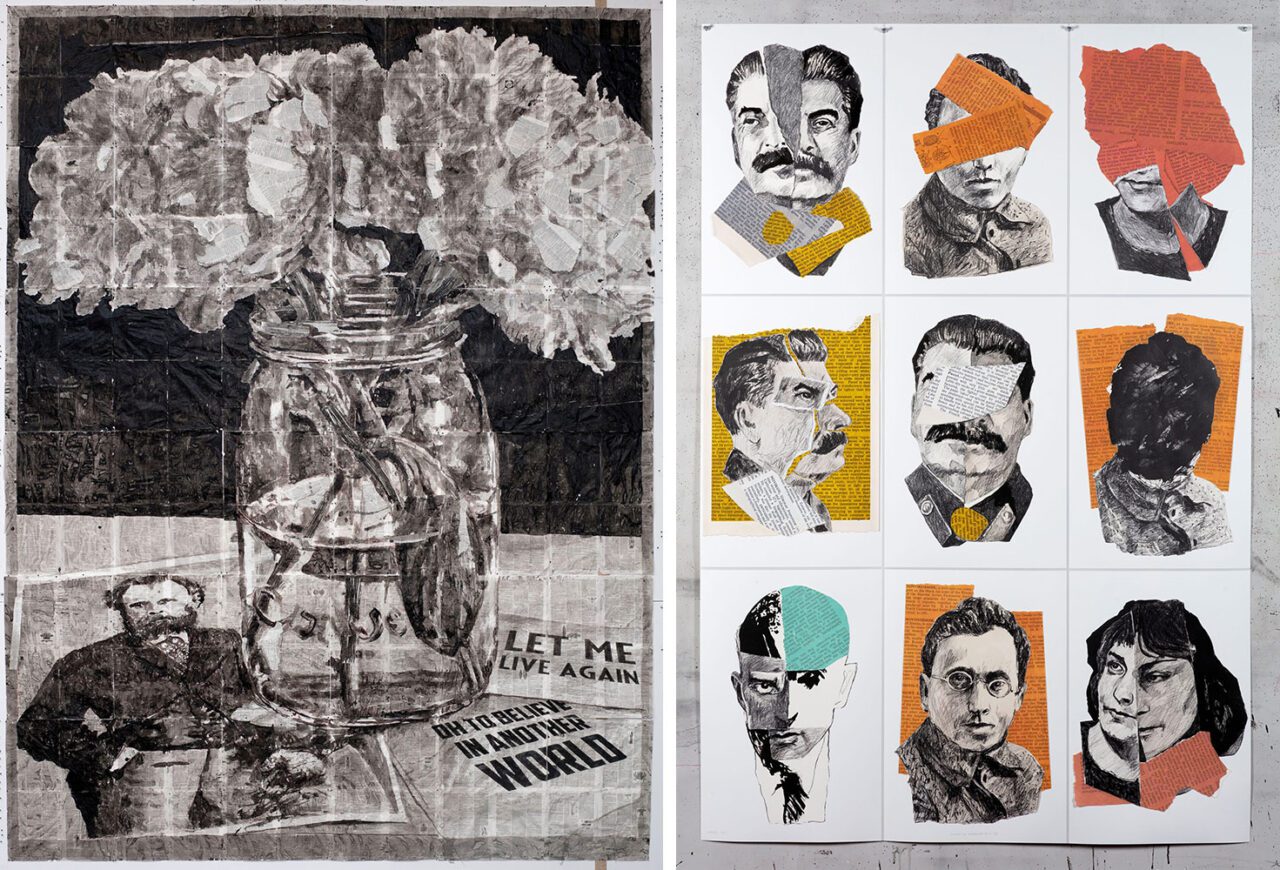
Right: William Kentridge, Portraits for Shostakovich Symphony No. 10 in E Minor, Opus 93 (III), 2022, Lithograph on Zerkall on BFK Rives 270 on 100% cotton cloth, Edition of 20, 165.4 x 111.5 cm, © William Kentridge. All Rights Reserved, DACS 2024, Courtesy the artist, Goodman Gallery and Hauser & Wirth
